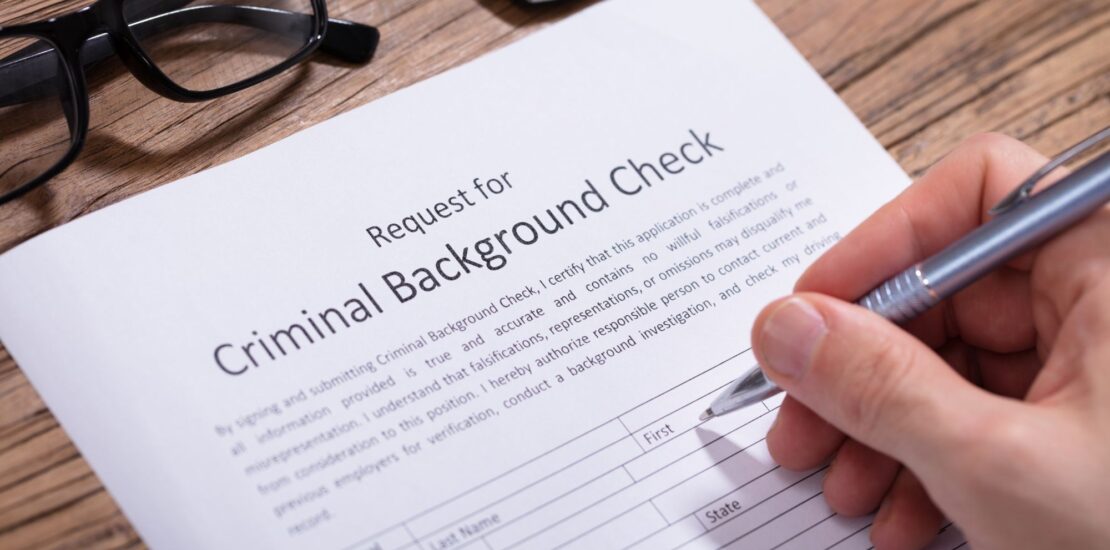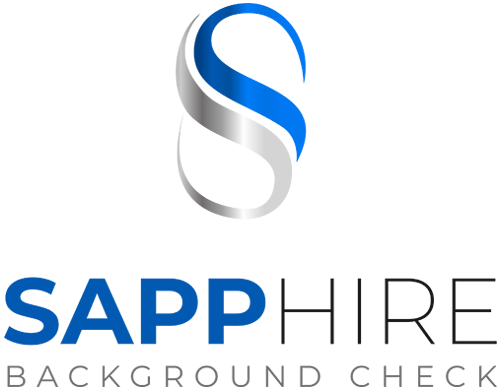What is a RAP Sheet? Guide to Understanding Criminal Records
- July 30, 2025
- Posted by: SappHire Check
- Category: background check tips

A RAP sheet, or Record of Arrests and Prosecutions, is a detailed summary of a person’s criminal history. It includes information such as arrests, charges, court records, and sentencing outcomes. Understanding what is a RAP sheet is important for anyone applying for jobs, licenses, or immigration-related processes, as it can affect how background checks are evaluated by agencies and employers.
RAP sheets are maintained by criminal justice agencies like the FBI, state departments, and local police. They are confidential and not available as public records. Access typically requires a fingerprint-based request and legal authorization.
What’s Inside a RAP Sheet
A RAP sheet includes a person’s full legal name, any known aliases, and the name used at the time of arrest. It also records personal details like date of birth and identification numbers tied to fingerprints, such as an FBI number.
In some cases, the Social Security Number may appear if allowed by law. These details help criminal justice agencies correctly identify the person associated with the criminal history records.
Arrest Information
Arrest information typically includes the date of the arrest and the name of the police department or federal agency responsible for the arrest. This section also lists the charges filed at the time and any available information about the circumstances.
These details form the starting point of the criminal justice process and serve as the foundation for what appears later in court records and sentencing history.
- Arrest date
- Arresting agency (police department or federal agency)
- Charges filed at time of arrest
- Circumstances surrounding the arrest
Court Records and Outcomes
This section includes the name of the court that handled the case, its jurisdiction, and the charges filed by the prosecution. It shows whether the case led to a conviction, dismissal, or another type of outcome.
Sentencing information, such as whether the person received probation, served time in jail, or paid fines, is also documented. These details reflect the legal resolution of the arrest listed earlier.
Additional Criminal History Record Information
RAP sheets may also include older offenses, whether classified as misdemeanors or felonies, and details about probation or parole status. Confinement information, such as the name of the facility and length of stay, may be listed.
This section might show whether the individual was convicted or diverted and could also include juvenile court records when accessible by law. It helps build a full picture of a person’s involvement with the criminal justice system.
- Prior offenses, including felonies and misdemeanors
- Probation status or revocation
- Confinement or prison details
- Whether a person was convicted or diverted
- Juvenile court records (if available and legally accessible)
Who Maintains and Provides RAP Sheets
RAP sheets are maintained by different agencies depending on the level of government:
| Agency Level | Responsible Entity |
|---|---|
| Federal | FBI – Federal Bureau of Investigation (NCIC system) |
| State (e.g., NY) | New York State Division of Criminal Justice Services (DCJS) |
| State (e.g., CA) | California Department of Justice (DOJ) |
| Local | Police departments and county criminal justice agencies |
Other criminal justice agencies, such as courts and correctional facilities, contribute information to these records.
Who Can Access RAP Sheets
RAP sheets are confidential documents that can only be accessed by specific authorized parties. These include law enforcement agencies, prosecutors, judges, and defense attorneys when handling criminal proceedings. They may also be reviewed by certain licensing boards in fields such as healthcare, education, or security. Employers may only access a RAP sheet if they are legally allowed to perform fingerprint-based background checks. The person named in the RAP sheet also has the right to request and review their record.
Private background check companies usually rely on public records, such as court databases, which are not the same as official RAP sheets. These third-party checks do not include sealed or suppressed criminal history record information unless access is granted by law.
How to Request a Copy of Your RAP Sheet
According to the FBI, you can request your RAP sheet by submitting a fingerprint-based identity history summary check. This request must include your fingerprints, proper identification, and a completed application form.
To request a RAP sheet:
- Submit fingerprints for verification
- Provide identification and complete the required forms
- Pay the processing fee (ranges from $18 to $95)
- Submit the request to the appropriate agency (FBI, state DOJ, or DCJS)
How to Read and Understand Your RAP Sheet
RAP sheets often organize information into segments or cycles that group related events together. A typical criminal justice cycle includes distinct entries for the arrest, prosecution, court disposition, and, if applicable, confinement. These segments outline the sequence of legal actions that follow a criminal offense.
The arrest segment provides information such as who made the arrest, the date, and the charges. The prosecution segment lists any plea agreements. The court segment shows trial outcomes and sentencing, while the confinement segment includes prison or jail dates and release information.
Common Errors Found on RAP Sheets
RAP sheets often contain mistakes, which can impact background checks or legal decisions. Common errors include listing incorrect charges, outdated warrant statuses, or the wrong arresting agency. These inaccuracies can stem from delays or miscommunications between courts and law enforcement.
Other issues include incorrect birth dates or identification numbers, missing disposition updates from the court, and sealed or expunged records still showing as active. These mistakes can misrepresent a person’s criminal history if not corrected.
How to Correct or Fix Your RAP Sheet
Fixing errors on a RAP sheet requires action depending on the type of mistake. If the arrest data is wrong, contact the arresting police department. For incorrect case outcomes, request a certified court disposition and submit it to the agency maintaining your criminal history record. If a case should be sealed but is not, send the official sealing order to the appropriate state agency.
Submit all documentation to the criminal justice services agency responsible for the record. If the process becomes difficult or if agencies do not respond, an attorney may be helpful, especially when dealing with older records or multi-jurisdictional cases.
Expungement and Sealing of Criminal Records
Expungement removes or hides certain criminal history records. Sealed records remain in the system but are hidden from most background checks.
Offenses Usually Not Eligible:
- Murder
- Robbery
- Sex-related felonies
Eligibility often depends on the date of conviction, whether the person is on probation or parole, and the seriousness of the offense.
RAP Sheets vs. Criminal Records in Background Checks
RAP sheets and public criminal records are not the same. These sheets are official documents maintained by law enforcement and include more detailed information, including sealed records.
| Feature | RAP Sheet | Criminal Record (Public) |
|---|---|---|
| Maintained By | Criminal justice agencies (FBI, DOJ, DCJS) | Court systems, online databases |
| Access Restrictions | Limited to law enforcement and authorized agencies | Publicly available (with some limitations) |
| Includes Sealed Info | Yes (in unsuppressed version) | No |
| Fingerprint Required | Yes | No |
| Use Case | Licensing, law enforcement, and attorney requests | Landlords, employers, and general screening |
Conclusion
Your RAP sheet can affect your future in areas such as employment, licensing, housing, or security clearance. It reflects your criminal history, including any convictions, dismissals, or sealed records. Mistakes in this record are common and may result in missed opportunities or legal complications. That’s why reviewing your RAP sheet is a practical step. You have the right to request it and correct errors directly with the responsible agency. This process often involves submitting certified documentation and verifying your identity through fingerprints. Understanding what’s on your RAP sheet helps you stay informed and take control of your criminal history records.
Sapphire Check provides secure background checks, fingerprint-based screening, and support with record requests. Contact us if you need help reviewing or verifying your background information. We assist both individuals and employers in accessing accurate and up-to-date criminal history information.
FAQs
What is shown on a RAP sheet?
A RAP sheet shows a person’s criminal history, including arrests, charges, court outcomes, convictions, sentencing details, and probation status. It may also list sealed or expunged records in some cases.
How can I get a copy of my RAP sheet?
You can get a copy of your RAP sheet by submitting fingerprints, valid identification, and a request form to the FBI or your state’s criminal justice agency. Fees and procedures vary by state.
Who can access RAP sheets?
RAP sheets are confidential and can only be accessed by law enforcement, courts, certain licensing agencies, and the person named in the report. Employers may only access them under specific legal conditions.
Can I fix an error on my RAP sheet?
Yes, to fix an error, contact the arresting agency or court, obtain certified documents, and submit them to the agency responsible for maintaining your record. Legal help may be useful for complex issues.
What’s the difference between a RAP sheet and a criminal record?
A RAP sheet is a detailed, fingerprint-based record maintained by criminal justice agencies. A criminal record may refer to public court records that are not always complete or verified.
